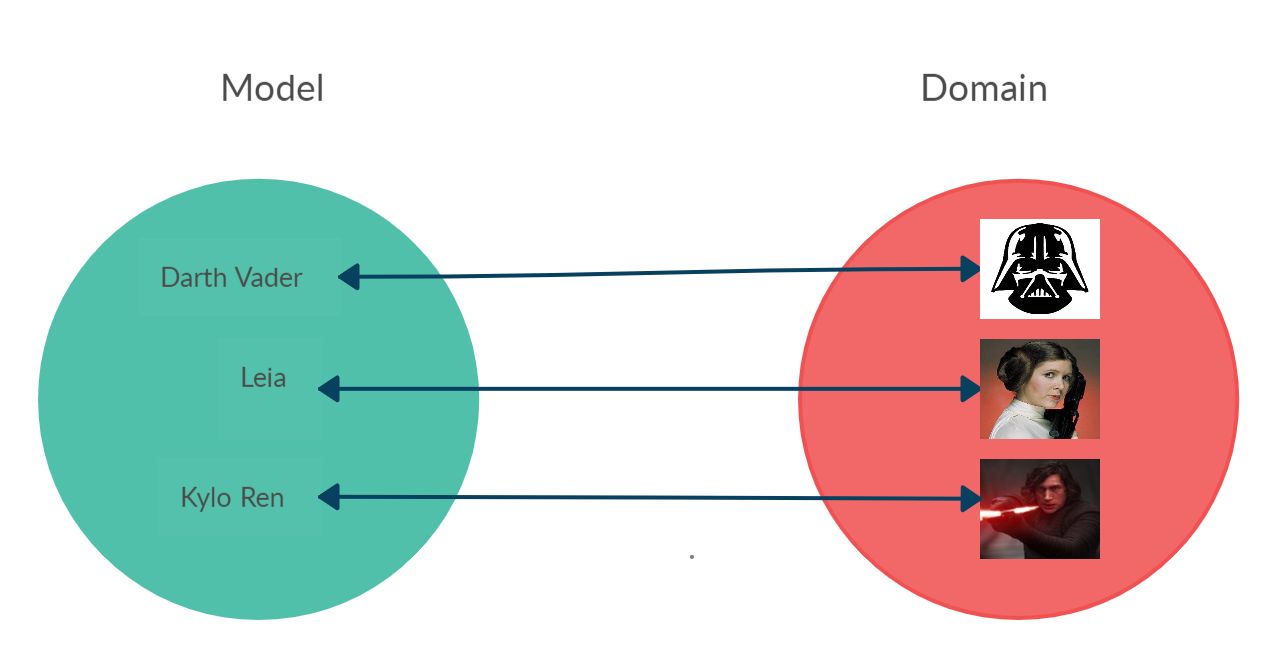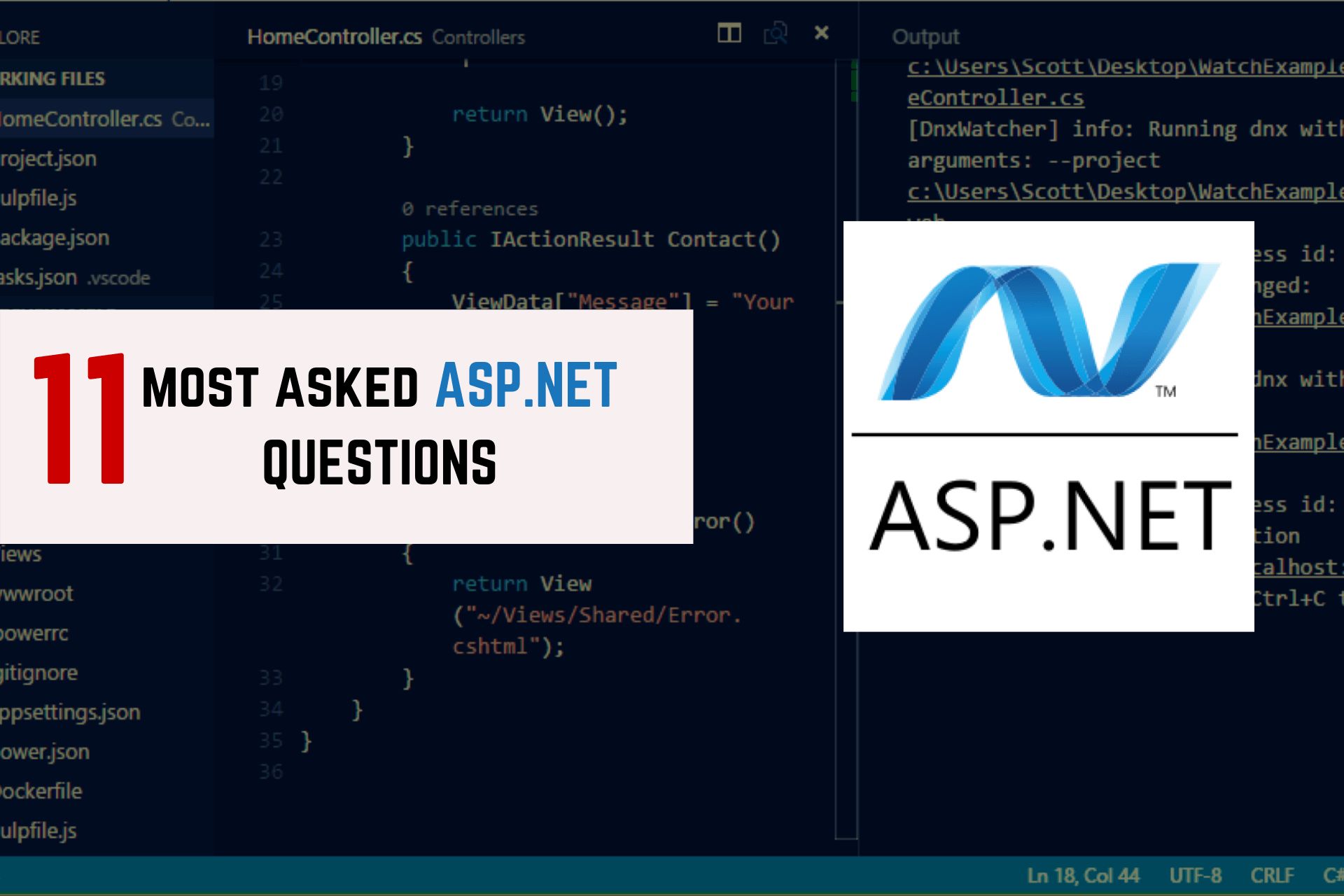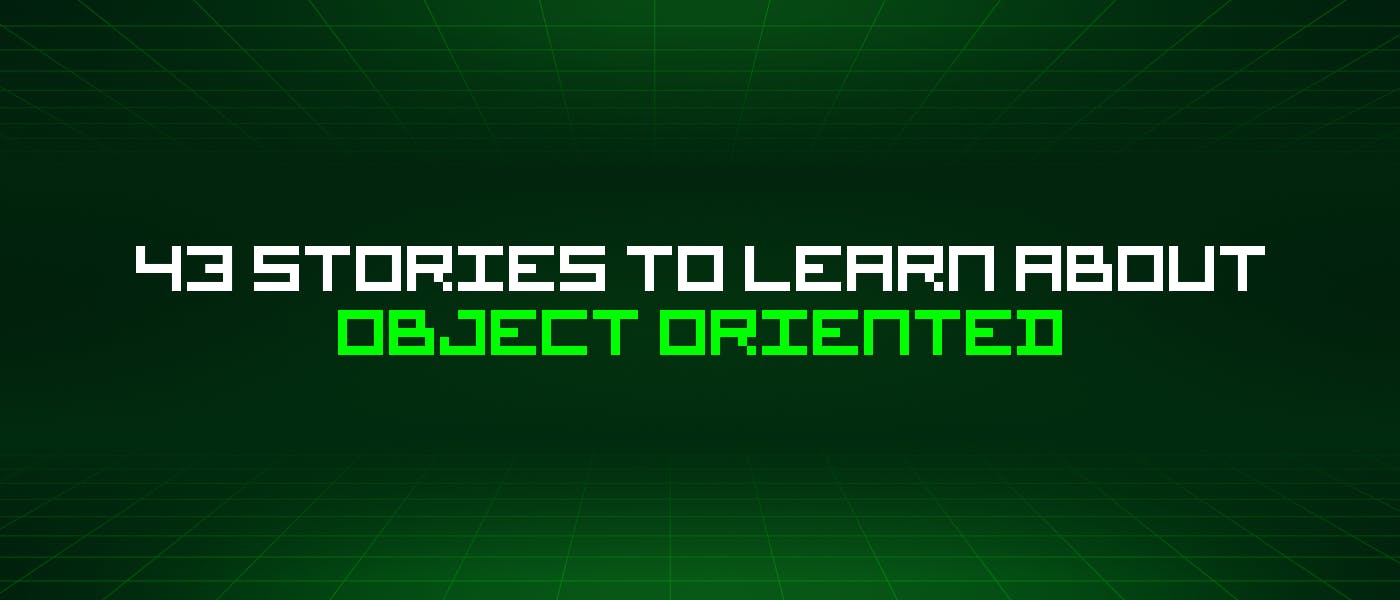Let's learn about Object Oriented via these 43 free stories. They are ordered by most time reading created on HackerNoon. Visit the /Learn Repo to find the most read stories about any technology.
“The object-oriented version of spaghetti code is, of course, ‘lasagna code’. Too many layers.” - Roberto Waltman
1. Object-oriented Programming vs. Functional Programming: Which Is Better?
 Let’s dive in to learn about object-oriented programming and functional programming. What is object-oriented programming/OOP? What's functional programming/FP?
Let’s dive in to learn about object-oriented programming and functional programming. What is object-oriented programming/OOP? What's functional programming/FP?
2. The Future of Work: How Machines Will Replace Humans
 Fear is not new but seems more real than ever. Will robots put men out of work or become their allies? Who will be most affected? How can they best prepare for the job market of the future? No one has the definitive answers to these questions yet, but what is known is that in a matter of a few decades we will witness a profound transformation of the production of goods and services that will fully impact workers and economies around the planet.Work is being replaced by machines, robots or algorithms, which do something more efficiently and do not create anything new, they simply replace the basic unit of work".
Fear is not new but seems more real than ever. Will robots put men out of work or become their allies? Who will be most affected? How can they best prepare for the job market of the future? No one has the definitive answers to these questions yet, but what is known is that in a matter of a few decades we will witness a profound transformation of the production of goods and services that will fully impact workers and economies around the planet.Work is being replaced by machines, robots or algorithms, which do something more efficiently and do not create anything new, they simply replace the basic unit of work".
3. Overloading Vs. Overriding in C#
 Method overloading and overriding are two common forms of polymorphism ( the ability for a method or class to have multiple forms) in C# that are often confused because of their similar sounding names. In this article, we show the difference between the two with some practical code examples.
Method overloading and overriding are two common forms of polymorphism ( the ability for a method or class to have multiple forms) in C# that are often confused because of their similar sounding names. In this article, we show the difference between the two with some practical code examples.
4. How to Evangelize a Programming Language
 In today’s IT world, there is a vast array of programming languages fighting for mind share and market share. Of course, there are the mainstays like Python, JavaScript, Java, C#, and C++. But nipping at their heels are many recent entries in the programming language Hunger Games such as Clojure, Crystal, Dart, Elixir, F#, Haxe, Julia, Kotlin, Nim, Pharo, Rust, TypeScript, etc. There are even a few not-so-new languages like Haskell (1990), Lua (1993), OCaml (1996), and Racket (1994). And they all want to grab your attention and convince you that they’re the road to programming bliss.
In today’s IT world, there is a vast array of programming languages fighting for mind share and market share. Of course, there are the mainstays like Python, JavaScript, Java, C#, and C++. But nipping at their heels are many recent entries in the programming language Hunger Games such as Clojure, Crystal, Dart, Elixir, F#, Haxe, Julia, Kotlin, Nim, Pharo, Rust, TypeScript, etc. There are even a few not-so-new languages like Haskell (1990), Lua (1993), OCaml (1996), and Racket (1994). And they all want to grab your attention and convince you that they’re the road to programming bliss.
5. How to Use Memes to Understand Object Oriented Programming
 OOP languages, like JavaScript and Python, organize software design around data that is formatted in objects, rather than function or logic.
OOP languages, like JavaScript and Python, organize software design around data that is formatted in objects, rather than function or logic.
6. Object-Oriented Databases And Their Advantages
 Object oriented database is a type of database system that deals with modeling and creation of data as objects. The main advantage of this database is the cons
Object oriented database is a type of database system that deals with modeling and creation of data as objects. The main advantage of this database is the cons
7. Static Polymorphism using Curiously Recurring Template Pattern (CRTP)
 Inheritance is one of the most used method for code reuse. Object Oriented Languages strive on the inheritance to collect the common functionality in a base class.
Inheritance is one of the most used method for code reuse. Object Oriented Languages strive on the inheritance to collect the common functionality in a base class.
8. 3 Things I Learned in 1 Year Working with Functional Programming
 Just like the great majority of programming-related courses, I was introduced to programming with the object-oriented paradigm (OOP). Even though many languages are multi-paradigm, like Python, C++, JavaScript and Ruby, we still have OOP as the norm.
Just like the great majority of programming-related courses, I was introduced to programming with the object-oriented paradigm (OOP). Even though many languages are multi-paradigm, like Python, C++, JavaScript and Ruby, we still have OOP as the norm.
9. 3 Simple Rules to Writing Better Code Instantly
 Learn how you can improve your code quality in an instant following 3 simple rules that we cal
Learn how you can improve your code quality in an instant following 3 simple rules that we cal
10. The Magic of Component-based Frontend Development

11. How To Remove Duplicates From a JavaScript Object
 We can use the Set object to remove the duplicates from an array. The Set object lets you store unique values of any type, whether primitive values or object references. This property can be used to store only the objects that are unique in the array.
We can use the Set object to remove the duplicates from an array. The Set object lets you store unique values of any type, whether primitive values or object references. This property can be used to store only the objects that are unique in the array.
12. OOP in Python: Understanding Private and Public Methods
 This blog post is part of a series of tutorials on Object-Oriented Programming in Python 3.0. We will try to understand the types of methods and their uses.
This blog post is part of a series of tutorials on Object-Oriented Programming in Python 3.0. We will try to understand the types of methods and their uses.
13. Why I love Java

14. Games, ChatGPT, Interactive Fiction and the Metaverse with FibreTigre
 Interviewing FibreTigre on games development, interactive fiction, the metaverse and whether ChatGPT will make it into games.
Interviewing FibreTigre on games development, interactive fiction, the metaverse and whether ChatGPT will make it into games.
15. 5 Different Angles To Look At Java
 I’ve encountered Java three times in my life.
I’ve encountered Java three times in my life.
16. SOLID Principles in JavaScript: What Does the "I" Stand For?
 Hello, guys, this is the fourth part of SOLID Principles in JavaScript and if you haven't read the previous three (first part, second part and third part), I highly recommend to read them first and come back here.
Hello, guys, this is the fourth part of SOLID Principles in JavaScript and if you haven't read the previous three (first part, second part and third part), I highly recommend to read them first and come back here.
17. Why I’m Excited for JavaScript Class Private Fields: A Case Study
 (JavaScript Class Privacy — Or Lack Thereof)
(JavaScript Class Privacy — Or Lack Thereof)
18. Can You Really Code Without IF Statements?
 I went to an OOP workshop by Sandi Metz several years ago. She made a comment that at one of her previous jobs, they didn't use if statements.
I went to an OOP workshop by Sandi Metz several years ago. She made a comment that at one of her previous jobs, they didn't use if statements.
19. SOLID Principles of Object Oriented Design And Architecture
 Object oriented programming (or OOP) is a style of programming that encapsulates data and behaviours into models known as objects. In this way, related code is grouped together and kept separate from other code, and provides reusable blocks that can be used to rationalise the problem at hand.
Object oriented programming (or OOP) is a style of programming that encapsulates data and behaviours into models known as objects. In this way, related code is grouped together and kept separate from other code, and provides reusable blocks that can be used to rationalise the problem at hand.
20. Coding on Python at Home
 How many more reports can you generate? How many sales figures do you have to tally, how many charts, how many databases, how many sql queries, how many 'design' pattern to follow, how many bugs to fix etc. etc.. because you get paid for it.. Fatigue sets in , purpose of living is being questioned, and just when you are about to yell '.. to hell with all this..', your mortgage comes due, and don't look for that escape vacation because we are in a corona virus shutdown..
How many more reports can you generate? How many sales figures do you have to tally, how many charts, how many databases, how many sql queries, how many 'design' pattern to follow, how many bugs to fix etc. etc.. because you get paid for it.. Fatigue sets in , purpose of living is being questioned, and just when you are about to yell '.. to hell with all this..', your mortgage comes due, and don't look for that escape vacation because we are in a corona virus shutdown..
21. Ruby vs Python: Which is Better for Your Application Development?
 Ruby and Python are some of the most commonly used programming languages for web application development. According to the Stack Overflow’s annual survey conducted among 90,000 developers worldwide, Ruby and Python were in the Top 15 most in-demand programming languages in 2019. It’s quite something considering that there are about 700 programming languages in the world!
Ruby and Python are some of the most commonly used programming languages for web application development. According to the Stack Overflow’s annual survey conducted among 90,000 developers worldwide, Ruby and Python were in the Top 15 most in-demand programming languages in 2019. It’s quite something considering that there are about 700 programming languages in the world!
22. Learning Fundamentals of C# and .Net Framework
 We are always talking about the mainstream programming languages to an extent where Python, Java, SQL, etc, are all that we see mostly. There are many other dynamic frameworks and languages like our topic of choice today; C sharp or C#, which are playing an integral part in global software development communities. Let's take an in-depth look at the fundamentals of C# as well as the .Net framework to better understand the exclusivity, features, and their advantages.
We are always talking about the mainstream programming languages to an extent where Python, Java, SQL, etc, are all that we see mostly. There are many other dynamic frameworks and languages like our topic of choice today; C sharp or C#, which are playing an integral part in global software development communities. Let's take an in-depth look at the fundamentals of C# as well as the .Net framework to better understand the exclusivity, features, and their advantages.
23. What is (wrong with) software?
 Software is eating the world. Those of us who work, live and love software do not usually stop by to think about its meaning.
Software is eating the world. Those of us who work, live and love software do not usually stop by to think about its meaning.
24. Coupling: The One and Only Software Designing Problem

25. Do We Really Need to Separate the Model from the UI? TLDR: No.
 Typically, domain models and UI views are completely separated. A few years ago, we had a good reason to do so because the views were mostly made of imperative code. But now that we have functional UI libraries (e.g., React with hooks), wouldn't it be possible to gather everything together, and implement the views as methods of the models they represent?
Typically, domain models and UI views are completely separated. A few years ago, we had a good reason to do so because the views were mostly made of imperative code. But now that we have functional UI libraries (e.g., React with hooks), wouldn't it be possible to gather everything together, and implement the views as methods of the models they represent?
26. Is it Crystal Clear for Everybody That a Date Should Not Mutate?

27. Three Different Ways to Create Objects in JavaScript

28. Exercises on Dependency Injection in ASP.NET: Introduction
 In this post, we will do some exercises to go over the basics of DI (Dependency Injection) in ASP.NET.
In this post, we will do some exercises to go over the basics of DI (Dependency Injection) in ASP.NET.
29. JavaScript Vs. Java: Differences, Similarities and History of Creation
 By @wagslane (twitter)
By @wagslane (twitter)
30. Ruby Services Vs. Objects: The Battle for Decomposition and Reuse
 Frustrated with unorganized business logic in your Ruby-on-Rails app? Forget what you know about object-oriented design and start using services.
Frustrated with unorganized business logic in your Ruby-on-Rails app? Forget what you know about object-oriented design and start using services.
31. Singleton Pattern: The Root of All Evil
 Allowed global variables and supposed memory savings
Allowed global variables and supposed memory savings
32. The One and Only Software Design Principle

33. Objects vs. Actors
 Readers are assumed to have at least a passing familiarity with an object-oriented language and an actor-oriented language (e.g. Erlang,
Pony). Note that objects and actors are orthogonal abstractions and
therefore a language may implement both – Pony is an example.
Language abstractions orthogonal to both objects and actors will not
be considered here, e.g. static vs. dynamic typing. Because Pony
mixes objects and actors, this paper will use Erlang as the prototype
for actors in order to draw a sharper contrast between objects and
actors. Further exposition of Pony will require its own paper.
Readers are assumed to have at least a passing familiarity with an object-oriented language and an actor-oriented language (e.g. Erlang,
Pony). Note that objects and actors are orthogonal abstractions and
therefore a language may implement both – Pony is an example.
Language abstractions orthogonal to both objects and actors will not
be considered here, e.g. static vs. dynamic typing. Because Pony
mixes objects and actors, this paper will use Erlang as the prototype
for actors in order to draw a sharper contrast between objects and
actors. Further exposition of Pony will require its own paper.
34. Fail Fast Philosophy, Explained
 Failure is fashionable. Making is much easier than thinking and failures are not stigma, let’s take this idea to our code.
Failure is fashionable. Making is much easier than thinking and failures are not stigma, let’s take this idea to our code.
35. Introduction to OOP in Javascript
 Javascript used to be, just a few years ago, one of the most disliked languages by the community, it's unnatural behavior was a common inspiration for jokes between developers. One of the main complaints was about the lack of a simple syntaxis to work with classes.
Javascript used to be, just a few years ago, one of the most disliked languages by the community, it's unnatural behavior was a common inspiration for jokes between developers. One of the main complaints was about the lack of a simple syntaxis to work with classes.
36. What Exactly Is A Name: The Quest [Part I]
 We all agree: a good name is always the most important thing. Let’s find them.
We all agree: a good name is always the most important thing. Let’s find them.
37. What Exactly Is A Name: Rehab [Part II]
 We all agree: a good name is always the most important thing. Let’s find them.
We all agree: a good name is always the most important thing. Let’s find them.
38. How to Decouple a Legacy System
 An exercise improving legacy code
An exercise improving legacy code
39. Nude Models - Part II : Getters
 Ye olde Reliable Data Structures and Their Controversial (Read) Access.
Ye olde Reliable Data Structures and Their Controversial (Read) Access.
Using objects as data structures is an established practice that generates many problems associated with the maintainability and evolution of software. It misuses brilliant concepts that were stated five decades ago. In this second part we will reflect on the reading access of these objects.
40. NULL: The Billion Dollar Mistake

41. 10 Most Sought-After Programming Languages You Should Learn In 2021
 If you are working on any technology and want to know which programming language is best for you then you can follow this article.
If you are working on any technology and want to know which programming language is best for you then you can follow this article.
42. ASP.NET FAQs
 ASP.NET is an open-source server-side web application framework that was developed by Microsoft. It is mostly used for building dynamic websites and applications. It is free and a cross-platform framework. So, today we will be checking out the 11 most asked ASP.NET questions.
ASP.NET is an open-source server-side web application framework that was developed by Microsoft. It is mostly used for building dynamic websites and applications. It is free and a cross-platform framework. So, today we will be checking out the 11 most asked ASP.NET questions.
43. Python Deep Dives: Multiple Inheritances And Mixin Classes
 I recently revisited three old posts on Django class-based views that I wrote for this blog, updating them to Django 3.0 (you can find them here and noticed once again that the code base uses mixin classes to increase code reuse. I also realised that mixins are not very popular in Python, so I decided to explore them, brushing up my knowledge of the OOP theory in the meanwhile.
I recently revisited three old posts on Django class-based views that I wrote for this blog, updating them to Django 3.0 (you can find them here and noticed once again that the code base uses mixin classes to increase code reuse. I also realised that mixins are not very popular in Python, so I decided to explore them, brushing up my knowledge of the OOP theory in the meanwhile.
Thank you for checking out the 43 most read stories about Object Oriented on HackerNoon.
Visit the /Learn Repo to find the most read stories about any technology.

